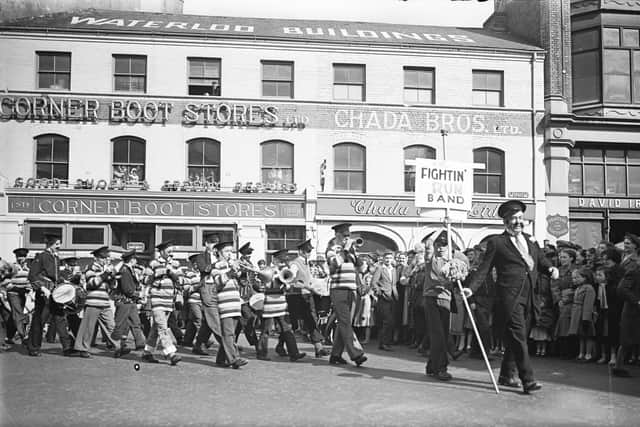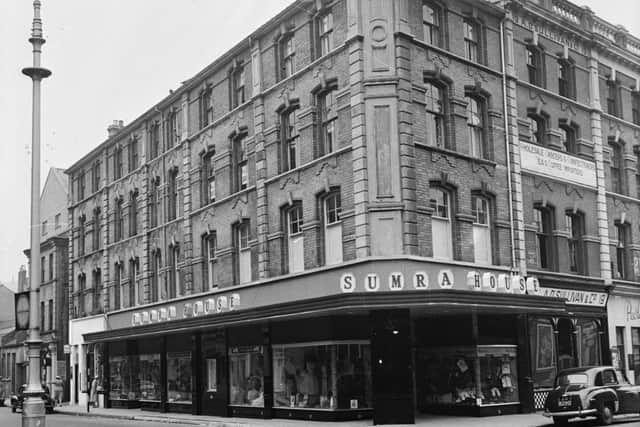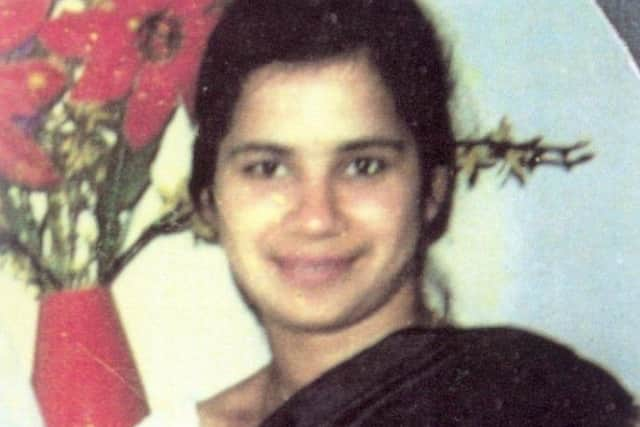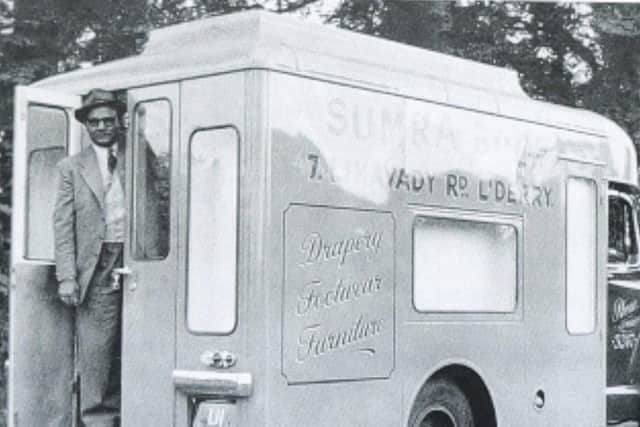The rich and varied history of ‘Derry’s Raj’
and live on Freeview channel 276
The majority of the Indians who came to live Ireland arrived in the late 1940s following the British withdrawal from India and the creation of Pakistan.
Many of them were very well educated and most of the men spoke excellent English.
Advertisement
Hide AdAdvertisement
Hide AdAs a result, they had little difficulty integrating with the local community - although we might sometimes wonder what they made of our local accent!


Their main business was in the retail industry with many of the Indian men travelling from house to house with their goods. This was a particularly useful service for two reasons.
Firstly, it allowed people from more isolated areas of the countryside to have access to a wide range of goods.
Secondly and more importantly, however, these Indian travelling salesmen were the only ones, at the time, who allowed goods to be paid for on a weekly basis: a great benefit to poorer people or those with large families.
Advertisement
Hide AdAdvertisement
Hide AdThe first Indians to actually arrive in Derry are believed to be two brothers, Takar Ds Abrol and his brother Mansur Ram Abrol, although they may have been preceded by Mohamed Ali who, while being transported from India to Cuba to work on the sugar plantations, jumped ship to England.


The first family to settle in Derry and become involved in the clothing business were the Sumras, long established at Strand Road, but who initially based themselves at Limavady Road.
For the majority of Indians who eventually settled in Derry, their first port of call was 4, Simpsons Brae, in the Waterside, where newly arrived immigrants could stay for a period - acclimatising themselves to the Irish way of life - before finding their own place to live.
The house had first been rented by Mohabat Rai Vij who later bought it. Although he later returned to India, the house continued to belong to the Vij family for a further fifty five years and, for a time, became “the meeting place” for the city’s Indian community.
Advertisement
Hide AdAdvertisement
Hide AdOther families who settled in the city were the Chada family, also involved in the clothing trade, owning the Corner Boot Stores, and the aforementioned Vij family.


Social life for Indians living in Derry was mainly centred around the family with members of different families in the area visiting one another on a weekly basis.
One reason for this was that, while the men generally had good English, a number of the women were less fluent in the language and would have found it more difficult to pick up as they spent much of their time at home looking after their families.
Because of their religion, Indians would not have gone into pubs or other places where alcohol was served. However, one form of entertainment in which the whole family could take part was watching films from India.
Advertisement
Hide AdAdvertisement
Hide AdThe first Indian film club was set up in Derry in the 1950s, with films being hired from the Indian Embassy in London. They were screened on a Sunday evening at either the Palace Cinema, Shipquay Street, or the City Cinema on William Street.


Later, however, as interest in the film club grew, the venue moved to various locations which would allow Indians from right across Northern Ireland to come together to view the films.
Unfortunately, we cannot describe the history of the Indian community in Derry without referring to the killing of Asha Chopra in 1974.
Mrs. Chopra lived on the Greenhaw Road. She had two small children and was expecting a third.
Advertisement
Hide AdAdvertisement
Hide AdWhen she was shot, she was driving her car with the two children in the back seat. As she stopped at traffic lights, she was shot in the head by a bullet intended for security forces attending a nearby bomb alert.
Although she was rushed to hospital, she died soon afterwards.
On a less sombre note, the first marriage between an Indian and a member of the Northern Ireland community to take place in a church rather than a registry office was held in Derry in March 1963 when Harprashad Vij married a local girl - unfortunately, the girl’s details were not recorded in my source.
There are more than 200 people of Indian origin living in the city, many of them involved in the retail trade while others, such as consultant surgeon, Mr. Kanwar Panesar, have worked in the medical profession.
Advertisement
Hide AdAdvertisement
Hide AdThe rise in the city’s Indian population was also evidenced by the opening of a Sikh temple at Clooney Terrace.
Since their arrival in the 1940s, the Indian community has always played an important role in the life of the city. Because of this, they have become more and more integrated into Derry life.
How things have changed since the days “Paddy Sumra”- as he was known in Derry - first began trading from his van.
In preparing this article, I consulted Narinder Kapur’s book “The Irish Raj” as well as speaking to both Suneil Kher and Charlotte Vij. I am very grateful for help received.